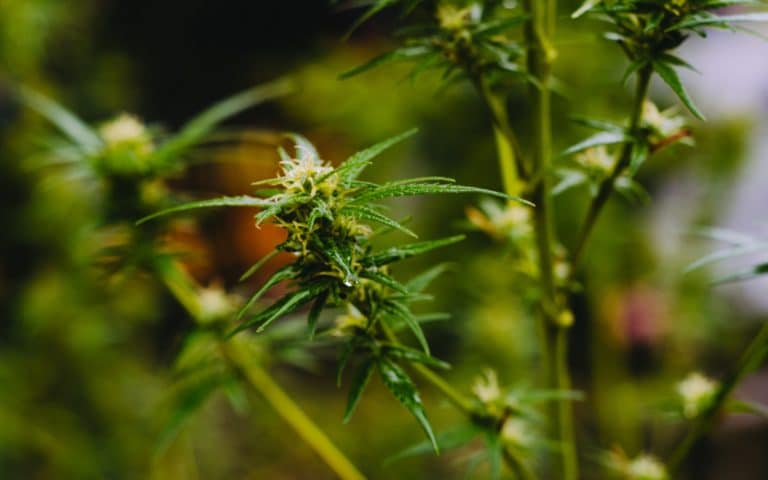What Are Terpenes & What Are They Used For?
Posted on January 20th, 2021 to Education by Zach Santarsiero
Terpenes have gained a lot of recognition in the cannabis realm, and it is not without reason. These components don’t just support the effects of cannabinoids or deliver a unique strain experience, but also offer some of their own body/mind benefits. But what are terpenes, and what are terpenes in weed exactly?
To better understand terpenes and why they are valuable, you have to take a quick crash course in the chemistry of plants. Let’s take a closer look at what terpenes are and what terpenes weed has made popular.
Quick Links
- What are terpenes?
- What are terpenes in weed?
- Most popular terpenes
- Why do plants produce terpenes?
- Where are terpenes produced in the plant?
- How are terpenes extracted?
- What are terpenes used for?
- Benefits of terpenes for humans
- Terpenes and the entourage effect
- Concluding thoughts on terpenes
WHAT ARE TERPENES?
Everywhere you look in the natural world you find plants that hail from all different genetics and that serve all kinds of purposes. Every plant, including those in the cannabis family, contains a profound collaboration of various compounds and phytochemicals.
Terpenes are just one of many chemical compounds found naturally in plants. These unique chemical compounds contribute to the aromas and flavors of the plant. Technically speaking, terpenes belong to a large class of volatile aromatic secondary metabolites naturally produced by a diverse group of plant species. To put it more simply, terpenes are the naturally present chemicals in plants that make them smell the way they smell and taste the way they taste.
WHAT ARE TERPENES IN WEED?
On the most basic level, even though the plant has a notorious reputation, cannabis is a plant. Just like other plants and fruits from plants like lemons, pine needles, eucalyptus, or blueberries, cannabis contains terpenes. In fact, cannabis contains some of the most abundant levels of terpenes in the plant world, which is why weed can be so incredibly aromatic.
While the exact number is still up for debate, some speculate that cannabis may consist of hundreds of different terpenes. What are terpenes used for when it comes to weed? What you may not know is if you are a regular cannabis connoisseur, you likely pick your favorite strain because of the terpenes found in that strain. For example, if you enjoy the spicy aromatics of something like Critical Mass, you like the pinene terpene. Likewise, if you’re all about the citrusy pop in Wedding Cake, you’re after Limonene.
Beyond weed terpenes being good for flavor and aromatics, some research is indicating the terpene profiles of each individual strain could affect the overall experience. For example, that limonene in your Wedding Cake may soothe anxious thoughts and feelings.
WHAT ARE SOME OF THE MOST POPULAR TERPENES?
There are over 30,000 terpenes in existence (that we know of, at least). Even though terpenes are found in all kinds of plants and foods we eat, these compounds have made a name for themselves because of their affiliation with cannabis. Some of the most popular terpene isolates include:
The bulk of these terpenes can be easy to point out because of their telltale aromatics. For example, linalool offers a telltale lavender/orange/citrus odor.
WHY DO PLANTS PRODUCE TERPENES? WHAT’S THEIR PURPOSE?
Terpenes are classified as secondary metabolites, meaning their production is not directly involved in the growth, development, or reproduction of the plant. Depending on the plant species, terpenes can serve a multitude of roles. For example, some terpenes may assist in survival by deterring pests and some may assist in reproduction by attracting pollinators.
WHERE ARE TERPENES PRODUCED WITHIN PLANTS?
Plants produce terpenes in specialized cells or resin glands. And, plants of different species can produce terpenes at different stages of their life cycle. For example, some plants have an abundance of terpenes early, before they are even fully developed or matured, while others may not offer full terpene profiles until fully matured. In nature, terpenes are derived biosynthetically from activated forms of the isoprene molecule.
HOW ARE TERPENES EXTRACTED?
Terpenes can be naturally extracted by examining the species of the plant, determining when terpenes are most abundant, and using special extraction methodologies. Once a collection of terpenes has been extracted, they can be further refined into the state of a single isolated terpene. Some terpenes are also organically synthesized for human and animal use by synthetically or semi-synthetically replicating the natural molecule as the modifiable building block.
WHAT ARE TERPENES USED FOR?
Even though many people are more concerned about what terpenes are found in weed and how that can enhance their experience, terpenes have made their way into many areas of everyday life. The aromatic profiles of some of these plant-derived molecules are pleasing to human noses, so some terpenes are extracted purely for use as fragrancing ingredients.
You can find terpenes and synthetic terpenes in everything from perfume to household cleaning products. Some terpenes are also used as flavoring agents because they have a desirable taste.
THE POTENTIAL BENEFITS OF TERPENES FOR HUMANS
Terpenes are not just nicely fragrant and possibly pleasing to the palate, they may also offer some therapeutic benefits as well. Certain terpenes have been examined extensively for their potential benefits to human health.
Caryophyllene, which has a structure more resemblant to a cannabinoid, actually interacts with the body’s endocannabinoid system. The terpene is thought to offer analgesic effects that may help deter certain types of pain, and may even act as an antioxidant.
Limonene is not just good for curbing anxiety, as mentioned earlier, but may also reduce appetite, support healthy digestion, and support the cardiovascular system. Another terpene, linalool, is thought to be especially beneficial to the nervous system and may even help with the biodelivery of certain medications.
WHAT ARE TERPENES AND THE ENTOURAGE EFFECT?
The entourage effect describes the synergistic interaction between phytochemicals, including terpenes and cannabinoids. The thought is that cannabinoids provide a more powerful experience when combined with other cannabinoids, compared to when they are isolated. But beyond that, the entourage effect also seems to apply in terms of terpenes combined with cannabinoids. For example, linalool may heighten the relaxing effects of CBD (cannabidiol, a cannabinoid).
A FINAL WORD ON TERPENES
Whether you have ever found yourself questioning what are terpenes in cartridges or what are terpenes at all, these plant compounds are well worth a closer look. Each terpene, whether derived from cannabis or otherwise, may offer benefits to both the mind and body. The research only continues to paint these compounds in a positive light.
Copyright © 2024 Advanced Terpene Solutions |
Site by CannaPlanners




